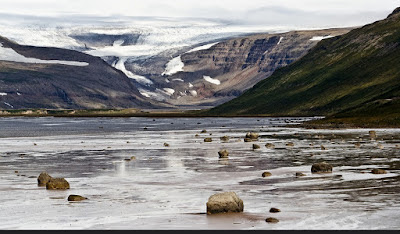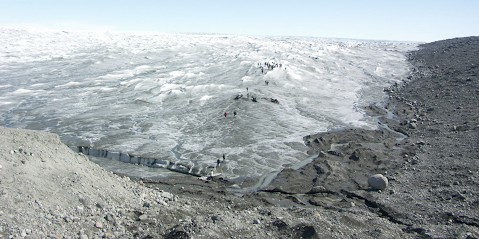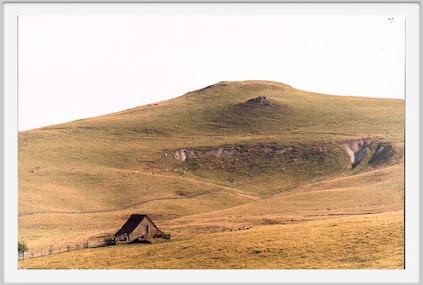I haven't been concentrating. Without me noticing, we have gone through the "two million pageviews" barrier some days ago. We seem to average between 10,000 and 15,000 page views per month. I have made 3,238 posts on the blog, and we have had 19,350 comments from participants in our discussions.
In looking at the popularity of posts, the big favourites (with over 1,000 hits) are the ones dealing with the bluestones, quarries, lost circles etc. That's much as one might expect. But I'm also heartened by the large number of hits we get on posts about Quaternary events and on glacial geomorphology, and also more general posts about archaeology. We get a lot of reads from academics, school teachers and students -- I know that from some of the comments I get off the record.
Some academics get rather snooty when they talk about blogs, pretending that they are ephemeral and unreliable, because they are unverified and free of objective editing. Some even refuse to look at them because they are disreputable. Some journals refuse to accept blog citations. Yes, blogs are almost always opinionated. That is why they exist. But I insist that blogs such as mine are no more disreputable than certain academic journals and web sites, given what we know about the corruption that is associated with the peer review process. Some journals maintain high standards, and operate a very good peer review process -- but some peer reviewed articles are so appalling that they do nothing for the reputations of published authors and bring the journals themselves into disrepute.
Blogs such as mine are actually rather democratic. I quite often publish material (including photos) sent to me by other people, and one valuable asset is the ability to illustrate articles rather heavily, making them more appealing to readers than the rather stiff or sterile presentations seen in academic journals. There is editing too, but that is done post-publication through comments from readers -- and these comments very often lead to me changing the wording of a post, or adding a postscript. So what's not to like?
The nice thing about a blog such as mine is that it provides a medium for the instant publication of field results, a forum for the discussion of current issues, and a place for rapid reviews of new specialist articles. Of course there is a degree of subjectivity in what appears on a blog -- but is your average "specialist academic article" free of subjectivity? Hmmm -- I think not.
Sometimes I encounter full-on abuse and trolling behaviour. That can be upsetting, but I have learned to live with it -- and those who set out to cause trouble generally end up being banned from the site, with their messages lost without trace in the dustbin.
I like Blogger because it is a very easy platform for the creation of posts and easy for the user to read both new and old articles. There is also a very good search facility, which I use every day for cross-referencing articles and topics.
So we battle on, in the hope that we can bring hard information to the attention of our faithful blog followers, and a little entertainment as well...... and it's good to know that the National Library of Wales archives the blog, presumably on the basis that it now contains a vast store of original fieldwork records, as well as journal article reviews and information relevant to the fields of Quaternary chronology, glacial geomorphology, scientific ethics and archaeology.
On we go, God willing, towards the next million!
==================
This was my first post, on 25 May 2009:
On this blog I want to take a hard look at the famous and ruinous old collection of stones which we call Stonehenge. English Heritage and most archaeologists seem to think that is all sorted, and that the stones were moved by Neolithic tribesmen from Preseli in West Wales all the way to Salisbury Plain. They cite the theory as if it is established fact. All very well, except that there is not a shred of evidence to support what they say.......
But there is a great deal of evidence which suggests that the bluestones are glacial erratics, picked up from more than 20 sites in West and South Wales, and carried eastwards by the ice of the great Irish Sea Glacier to various locations to the west of Stonehenge -- maybe in the vicinity of the Somerset Levels or the Mendip Hills.
If you read most of the specialist literature, it is simply assumed to be fact that the Neolithic tribes who built Stonehenge were capable of moving more than 80 large stones over a vast distance, over land and sea -- all the way from Carn Meini in Pembrokeshire to Stonehenge on Salisbury Plain. But where is the evidence in support of this? There is none -- but there is a vast amount of unscientific supposition, with assumption piled on assumption, and a great deal of circular reasoning as well. This is bad science, and such is the intolerance of the archaeology establishment to the idea of glacial stone transport that what we have effectively is a conspiracy. Not a conspiracy of silence, but a conspiracy to keep the glacial theory out of sight and out of mind. Why? I'll explore that one of these days.

















































